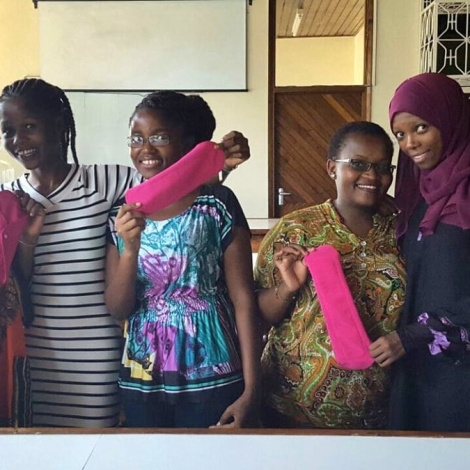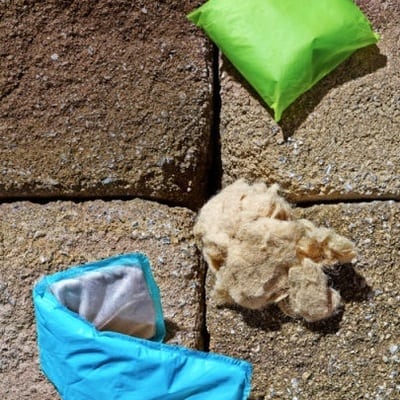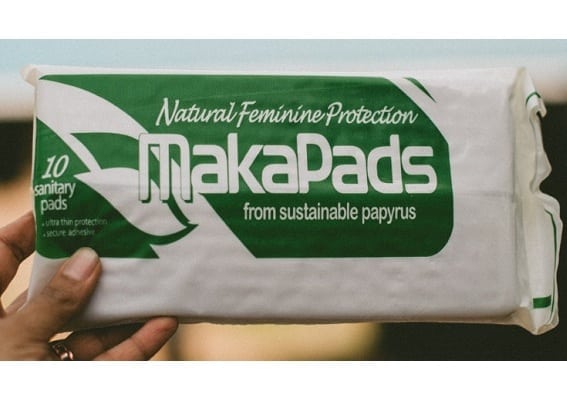Without access to affordable napkins, girls and women in developing countries might miss up to 50 days of school or work every year. Over the years, many initiatives have been trying to address this issue by supplying sanitary protection to underserved populations. In most cases, the approach is to offer either disposable or reusable sanitary napkins. This article is to discuss advantages and disadvantages of these two solutions.
Disposable napkins are made from absorbent materials such as wood pulp, cotton or other plant fibers. The absorbent is usually covered with a nonwoven or apertured plastic film cover. The products typically have a plastic barrier, covered with adhesive to enable attachment to the underwear. The adhesive layer is protected with a removable release liner. Some napkins offer wings for better attachment, some are without wings. Disposable napkins offer a hygienic solution for women’s menstrual needs; the products are used only once and are discarded after use.
Unfortunately, many developing regions lack sufficient a waste management infrastructure, thus, disposal of the used products may pose a problem. The plastic components are not biodegradable, leading to potential issues if disposed in pit latrines or toilets. Lacking means to safely discard the products, many women resort to burning or burying them after use. The taboo nature of menstruation found in many cultures exacerbates the disposal issue, potentially raising concerns about the fate of the discarded products. Supplying a simple clay incinerator (e.g. “Ashudhinashak”, developed by the Vatsalya Foundation in Gujarat) can offer a discreet and appropriate way to dispose of used sanitary napkins.
Access to these products will allow women and girls to attend work or school.
A different concern regarding disposable products is the relatively high cost. Although indigenous absorbent fibers might be available, many other components often cannot be sourced locally and must be imported. As a result, the typical cost per napkin is about USD $0.05. Using only five pads per cycle, women would have to spend about USD $3.25 per year to manage their menstrual needs. Examples for locally produced disposable sanitary napkins are MakaPads in Uganda, go! pads in Rwanda and Nia pads in Kenya.
Reusable pads are an alternative to disposable napkins. They are usually sewn locally, using absorbent cloth and an impermeable layer. These products often are attached to the underwear with snaps, or hooks, positioned on wings. Typical examples are Eco Femme pads in India and AfriPads in Kenya, Uganda and Malawi. Other designs such as Agateka in Burundi can be worn without underwear by attaching them to the body with strings, like a string bikini. A third approach are absorbent menstrual panties as offered by BeGirl in several African countries.
Both disposable and reusable napkins are significant improvements over typical homemade improvised solutions such as cloth, paper or even leaves.
Reusable pads don’t pose the waste issues encountered for disposable pads, but they require appropriate cleaning between uses. To keep the pads hygienic, access to water and soap or detergent as well as space to air dry the washed napkins is necessary. Unfortunately, research indicates that only a fraction of the women clean and dry them sufficiently, sometimes for lack of clean water or detergent, but more often because women lack the space to dry the pads discreetly and thoroughly. Damp pads may harbor bacteria and yeasts which potentially could pose a health risk.
Reusable pads tend to have a higher initial price: sets of three are typically sold between USD 3.00 and USD 6.00, but since they are designed to last several years, they are more cost effective over time.
Both disposable and reusable napkins are significant improvements over typical homemade improvised solutions such as cloth, paper or even leaves. Sanitary pads for developing countries need to be absorbent enough to last up to 12 hours, since outside their homes, women often lack the facilities to change the pads discreetly in private. Including education about menstrual health and creating awareness not only for women and girls, but also among men, can further increase the impact. Access to these products will allow women and girls to attend work or school and therefore can address this potential gender equality issue.
Michael Moscherosch is a Contributing Editor at Engineering for Change and works research, development and engineering for a consumer health products manufacturer. His current focus is on social innovation with an emphasis on developing scalable solutions for underserved communities, mainly in sub-Saharan Africa.



I like this article so much.
We girls needs sanitary pads for low cost especially in developing countries ,not only pads we need also some education on menstruation .
All the thanks is for SHE which helps Rwandan students to affords sanitary pads easily.
Thanks to the writer and publisher of this article .
I wish everyone to read it ,its amazing and truly convincing .